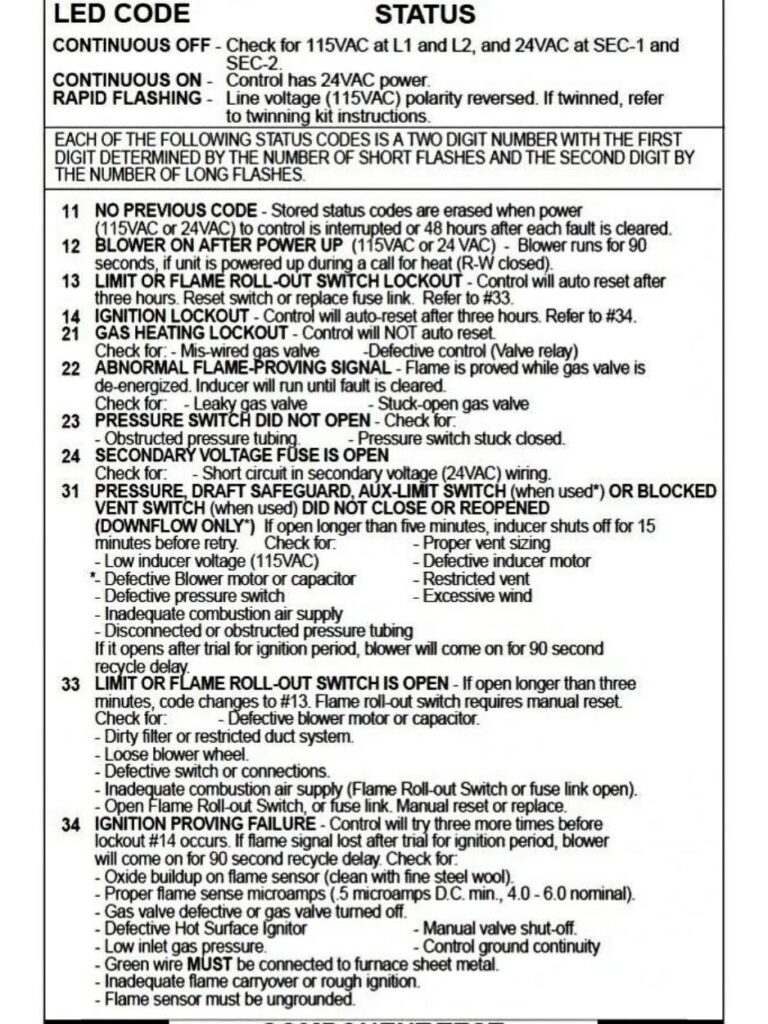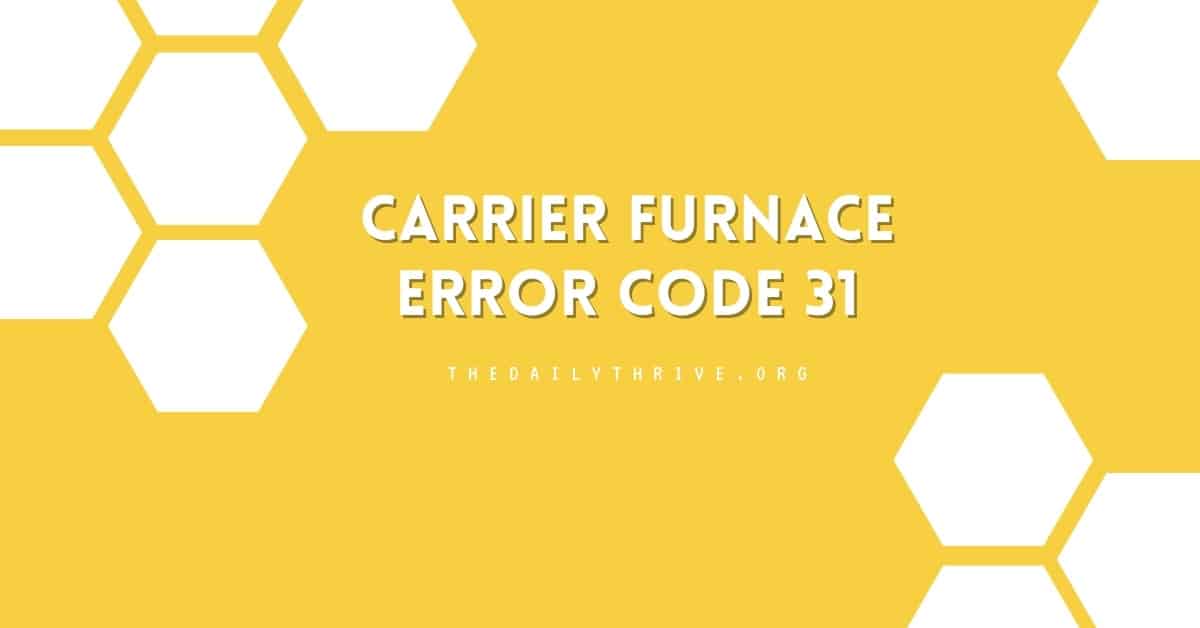Carrier furnaces are renowned for their reliability and efficiency. However, like any sophisticated machinery, they might encounter issues, one of which is indicated by the Diagnostic Light Sequence showing Code 31. This article delves into the meaning of Code 31 and provides a step-by-step guide on diagnosing and resolving this issue.
What is Carrier Furnace Code 31?
The Carrier Furnace displays error codes through a sequence of flashes. Code 31 is represented by three short flashes followed by a long one.
This specific error is related to the pressure switch and, possibly, the low gas pressure switch. It signals a malfunction in the furnace’s operation, typically involving the pressure switch failing to close or re-opening after closing or an open low gas pressure switch.
Several factors can trigger furnace error code 31:
- Clogged air filter: A dirty filter restricts airflow, impacting exhaust pressure.
- Blocked flue pipe: Obstructions like bird nests or debris can hinder exhaust flow.
- Faulty pressure switch: The switch itself might be malfunctioning.
- Low gas pressure: Insufficient gas pressure can lead to incomplete combustion and low exhaust pressure.
- Issues with the inducer motor: This motor helps create the necessary draft for proper exhaust.

Diagnosing Carrier Furnace Code 31
Experiencing a Code 31 error on your Carrier furnace can be puzzling and frustrating. Understanding and diagnosing the code is crucial for maintaining the efficient operation of your furnace.
This guide will walk you through the steps to identify and resolve the issues associated with this specific furnace error code, ensuring your system runs smoothly and effectively.
Check Furnace Operation
Begin by initiating a call for heat. Carrier furnaces usually run the blower for 90 seconds, displaying Code 12 at startup. Observe if the inducer motor starts and runs. If Code 31 appears but the inducer motor does not run, this indicates a possible issue with the inducer, capacitor, or control board. Further diagnosis is needed if the inducer runs but still flashes Code 31.
Examine the Inducer Motor
With a call for heat, measure for 115VAC between the black and white wires of the inducer motor’s 3-pin plug. No power suggests a bad control board, whereas power without inducer operation points to a faulty inducer, capacitor, or blocked inducer wheel.
Inspect the Safety Circuit
Check for 24VAC between “24V Com” and the orange wire on pin #4 of the 9-pin plug. The absence of power again suggests a malfunctioning control board. Similarly, check for 24VAC between “24V Com” and the yellow wire on pin #2 of the same plug. Specific power combinations on these pins with Code 31 can indicate a bad control board or necessitate further checks in the circuit.
Pressure Switch Assessment
Measure for 24VAC between “24V Com” and both sides of the pressure switch. Power on both sides means the switch is closed, and you may need to check the low gas pressure switch. If power is found only on one side, the switch is open, and you should check pressures using a pressure gauge, paying particular attention to the differential pressure at the inducer’s trip point.
Evaluating the Low Gas Pressure Switch (if used)
Check for 24VAC across the low gas pressure switch, which is similar to the pressure switch. Consistent power across both sides means the switch is functioning correctly. However, power on only one side indicates an open switch, leading to a necessity to check the gas pressure.
Troubleshooting Carrier Furnace Error Code 31
Troubleshooting these Carrier error codes can be straightforward with the right guidance. This guide will provide clear, step-by-step instructions to diagnose and fix the root causes of Error Code 31, helping you restore warmth and comfort to your home with minimal hassle.
Inducer Motor Check
The initial diagnosis phase involves basic observations of the furnace’s start-up behavior and the functioning of the inducer motor. This can immediately highlight whether the issue lies with the inducer, capacitor, or control board.
Safety Circuit and Pressure Switches Check
The heart of diagnosing Code 31 is meticulously checking the safety circuit, including the pressure switches. These components are crucial for the safe operation of the furnace and are often the culprits behind Code 31.
Tips:
- Always ensure your safety by turning off power to the furnace before beginning any inspections.
- Use a multimeter for accurate voltage readings.
- Keep the furnace’s manual handy for specific components and wiring diagrams.
- If the problem persists or if you’re unsure about handling any part of the diagnosis, it’s wise to contact a professional HVAC technician.
Bonus Tip: Bookmark this article as a handy reference guide for future code 31 encounters. If you have any questions or need further assistance, don’t hesitate to reach out!
Carrier Furnace Code 31 is a common issue that can often be resolved with a systematic approach to troubleshooting. By understanding what each step of the diagnosis process entails and carefully executing them, you can identify the root cause of the problem. Remember, safety is paramount, and professional assistance is just a call away when in doubt. With proper care and maintenance, your Carrier furnace will continue to provide reliable and efficient heating for your home.






